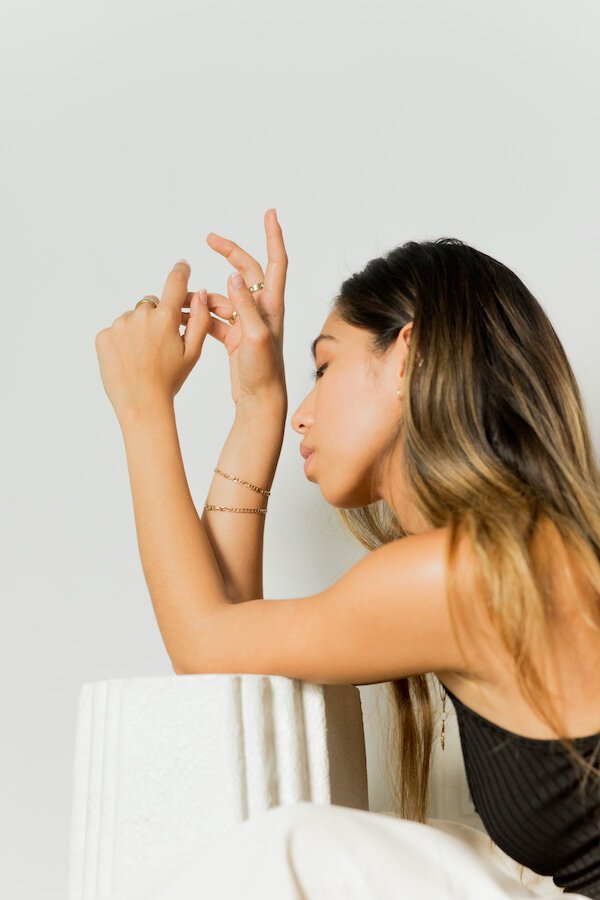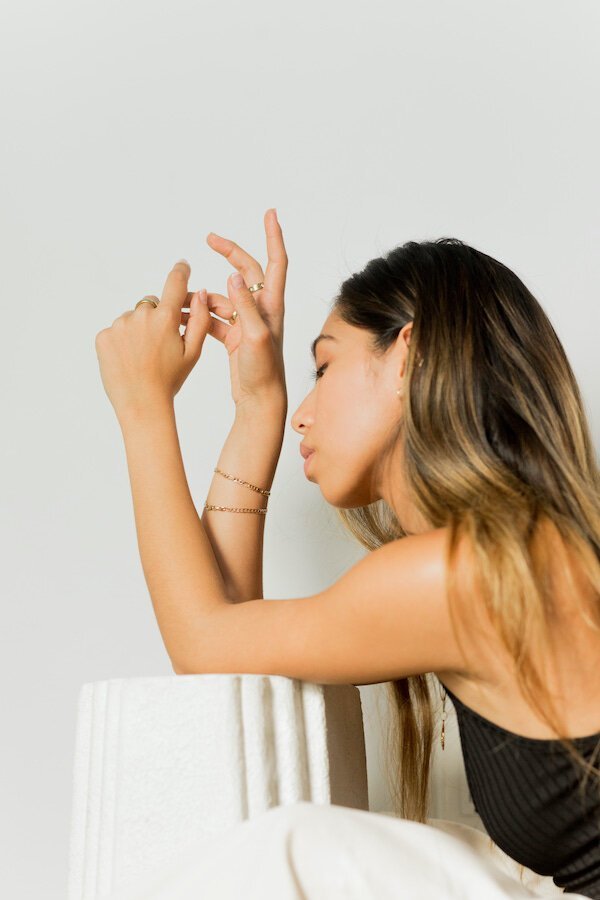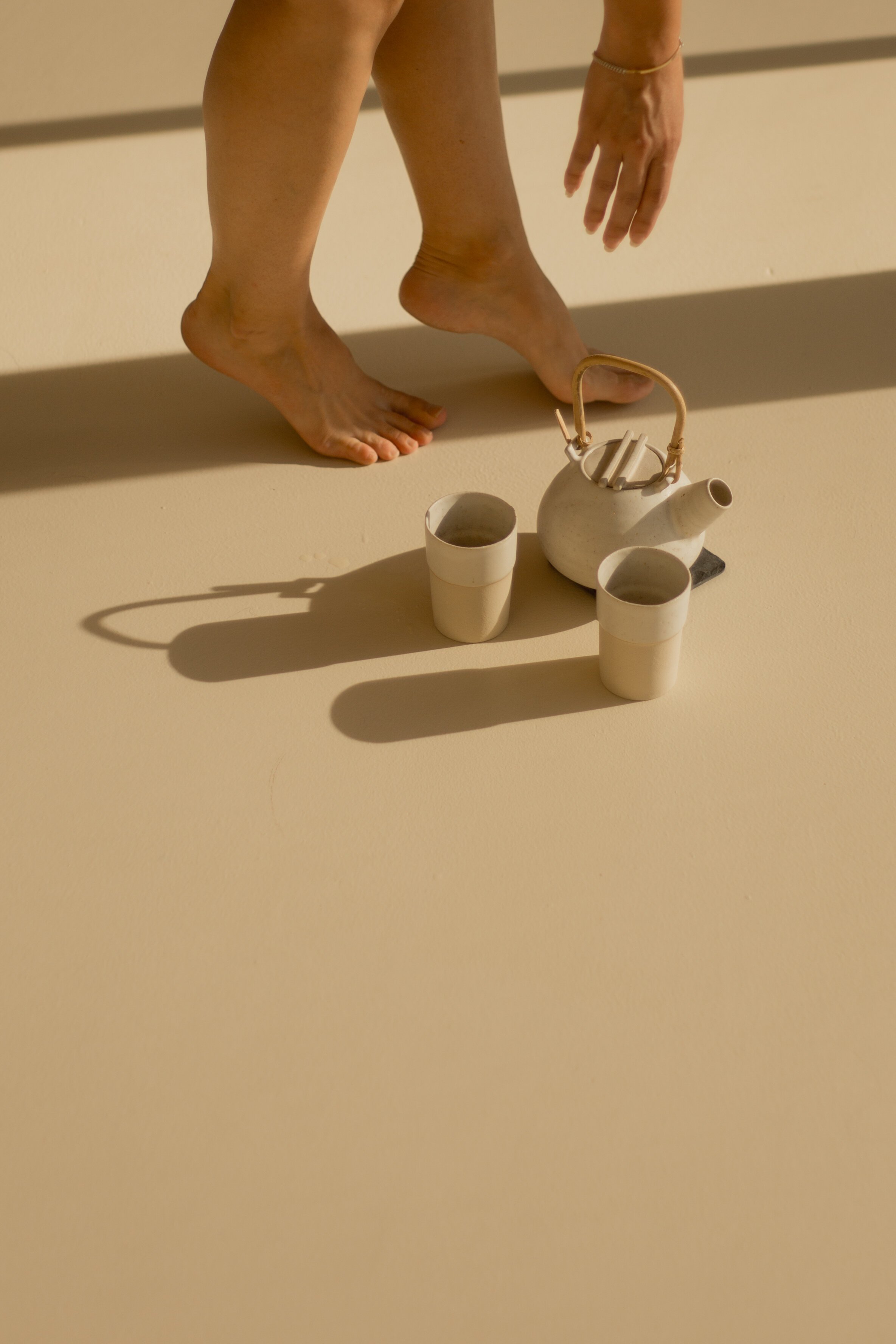
What Is Mindfulness?
Mindfulness is a a term as ubiquitous as sustainability and minimalism, and it’s become quite the buzzword in the wellness industry over the past decade. Do a quick Google search, and you’ll find numerous articles about everything from mindfulness practices to mindfulness apps to even mindful sex. But what exactly is mindfulness, and how do we incorporate it into our own lives?
Mindfulness is the art of living in the present, explains Shaliza Shorey, Psy.D., a Clinical Neuropsychologist and the Co-President of the American Association of Pain Psychology. “You’re not stuck in the past or worried about the future. You are in what we call ‘an alert mind and quiet body’ state, fully present to what is happening in the moment.”
“Mindfulness is about slowing down and observing our thoughts, emotions, and bodies.”
At the most basic level, mindfulness is about slowing down and observing our thoughts, emotions, and bodies. It can look intentional, like sitting in a quiet space and meditating for a few minutes. Or it can be something we practice throughout the day by simply bringing our awareness back to the present moment. When done without judgment—the goal isn’t to empty ourselves or focus on something positive—we learn to find peace wherever we are.
Of course, mindfulness can be more challenging than it seems, especially when we’re often valued for output and efficiency. Go, go, go is the phrase of the day in the western world. As masters of multi-tasking, mindfulness may not always feel so simple—or accessible, for that matter; not everyone has the opportunity to literally slow down, especially when working multiple jobs or caring for others.
But mindfulness may be more important than we think—especially as science and research point to physical health benefits. When we practice being mindful, we’re slowing our breathing and decreasing activity in our sympathetic nervous system, aka our fight-or-flight response, says Dr. Shorey. “This results in decreased muscle tension in the body (less pain and discomfort), increased blood circulation, greater heart rate variability, and improved cognitive and emotional functioning.”
“Utilize the moments we do have—few as they may be—to turn our attention to the present moment.”
Dr. Shorey also notes that people who practice mindfulness can have more balanced nervous systems, experience better sleep, and have less anxiety and less hypertension. “Even conditions that are believed to be purely medical, such as autoimmune illnesses, diabetes, asthma, etc., are managed much better in regular meditators versus those who don’t use [mindfulness] techniques,” she says.
And perhaps there are ways we can all experience the benefits, even those of us who don’t have much time or energy to spare. We can utilize the moments we do have—few as they may be—to turn our attention to the present moment. For example, if we’re waiting for the coffee to brew or we’re on hold with a customer service representative, we can take that time to check in with our breath and body.
“I teach patients who want to start exploring mindfulness to turn their attention to their breath at every red light [when driving]…take three to four deep breaths while waiting,” says Dr. Shorey, who invites others to practice mindfulness by simply noticing the small things in their daily lives, like taste, texture, smells, and colors of food when eating. By focusing on one task or one thought at a time, we release ourselves from the pressure to do everything at once. It really is that simple.
“The mindfulness movement doesn’t come without its critiques, though, specifically concerning the appropriation of Eastern spiritual practices and the erasure of people of color.”
The mindfulness movement doesn’t come without its critiques, though, specifically concerning the appropriation of Eastern spiritual practices and the erasure of people of color. Historically, mindfulness is traced back to Buddhism and sati, the first of the seven factors of enlightenment. A white American professor then brought the concept to the United States, and it has since become a nonreligious practice marketed mostly for its health and wellness benefits.
This can be a form of cultural appropriation, according to Kendra Surmitis, a professor of counseling on the faculty of Prescott College. “Most individuals probably know that there is some connection between Buddhism and mindfulness, but that the knowledge can often be scant, and that can create a gap in awareness,” she tells Vice.
While the physical health and mental benefits of mindfulness can be useful for everyone, we should continue to educate ourselves about the origins of this practice and amplify its original teachers’ voices. We can also support the work of current mindfulness teachers who understand this history.
“Mindful moments can teach us something new and offer us perspective—but only if we slow down long enough to observe and listen.”
Living mindfully is ultimately about choosing to be intentional and present, and it’s about approaching our thoughts and feelings with curiosity. Each of these moments can teach us something new and offer us perspective—but only if we slow down long enough to observe and listen.
To learn more about mindfulness, our editors have compiled a list of resources, including how to journal for mindfulness, how to practice mindfulness with your kids, and how to create a mindful morning routine.
Do you practice mindfulness? We’d love to hear how it has impacted your life in the comments below. ✨
Kayti Christian (she/her) is the Managing Editor at The Good Trade. She has a Master’s in Nonfiction Writing from the University of London and is the creator of Feelings Not Aside, a newsletter for sensitive people.





